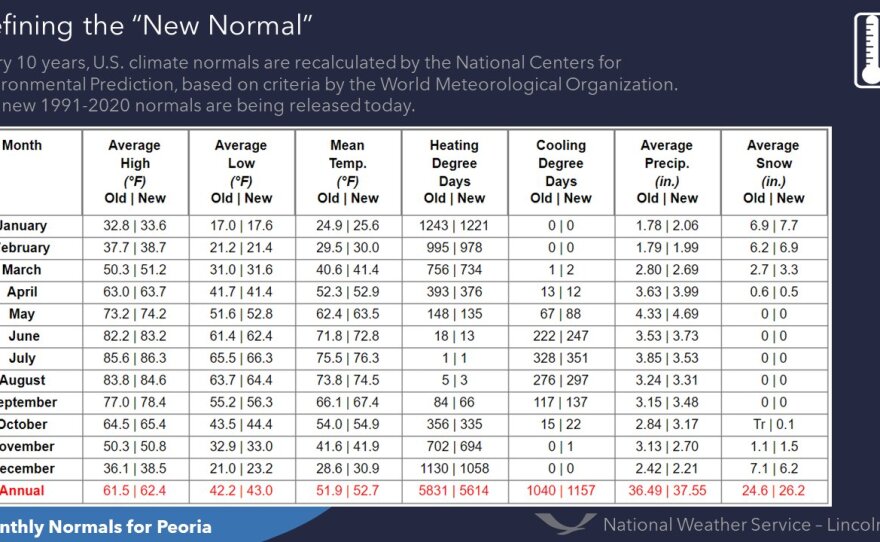Peoria is getting a little warmer and a little wetter, according to new averages used to monitor climate change.
Released every 10 years by the National Oceanic and Atmospheric Administration, the U.S. Climate Normals recalculates 30-year averages for temperature, rainfall, and other weather conditions across the country.
NOAA released the 2020 data earlier this week, showing Peoria with an annual average high of 62.4 degrees, a low of 43 degrees, and 37.55 inches of precipitation.
“We’ve seen an increase of about a degree and slightly higher precip totals as well, around an inch or so,” said Nicole Batzek, a meteorologist with the National Weather Service in Lincoln. “This just means that we’re typically seeing slightly warmer temperatures, and slightly higher precip amounts with the systems that we get more recently than we have in years past.”
Another indicator of Peoria’s warmer climate appears in a loss of about seven heating degree days per year, and a gain of four cooling degree days.
“Just putting it kind of in simpler terms, the heating degree days is the number of days that most people typically need to heat their homes or their businesses, and then the cooling degree days is in reverse — how many days are needed to cool homes or businesses,” said Batzek.
According to NOAA, the Climate Normals “reflect the impacts of the changing climate on our day-to-day weather experience,” rather than assessing long-term climate trends. With two-thirds of the data overlapping from the previous release, often changes are subtle.
The average temperature in the contiguous U.S. increased from 52.8 degrees to 53.3, making the last three decades the warmest on record. However, the changes vary geographically, season-to-season, and month-to-month.
“The new Normals are cooler across the Northern Plains and Upper Midwest, particularly during the spring season,” Batzek noted.
Ten years ago, Peoria had an average annual high of 61.5 degrees and a low of 42.2. The annual average mean temperature also increased by almost a full degree, from 51.9 for 1981-2010 to the current 52.7.
Despite the warmer temperatures, a 1.6-inch increase in the annual snowfall average – to 26.6 inches – contributed to the higher precipitation figure. Batzek said the precipitation increase of 1.06 inches is notable.
“That could lead to more flooding, especially in areas that maybe aren’t used to it or typically don’t receive flooding,” she said.




